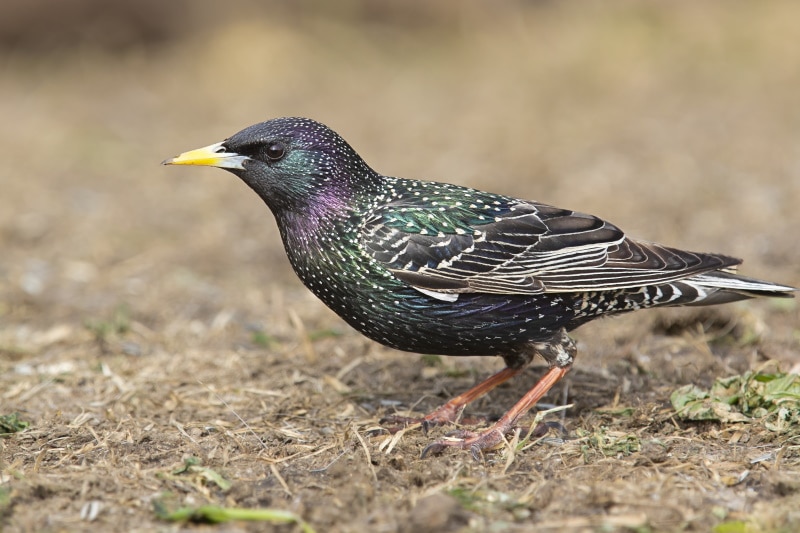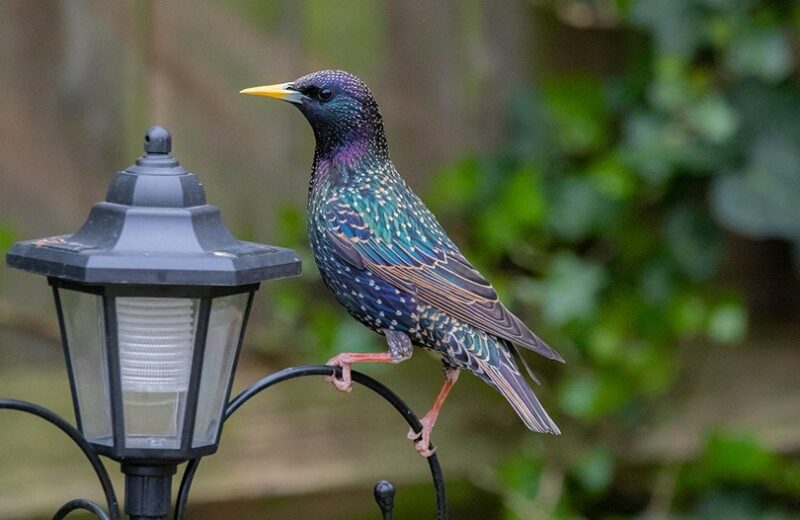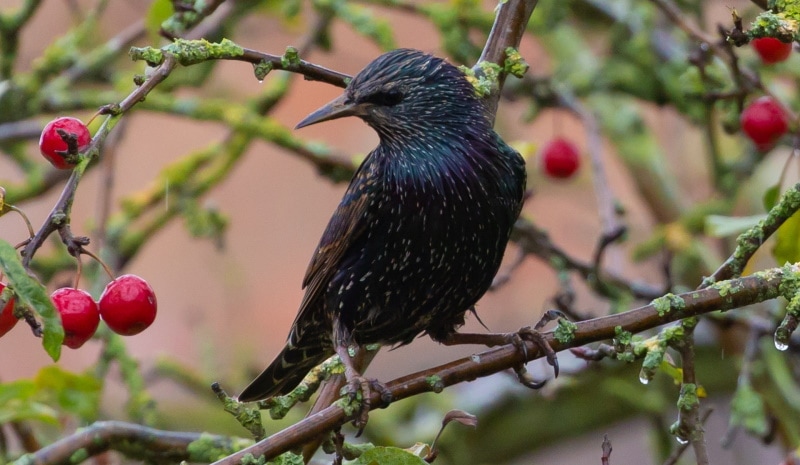Are Starlings Invasive? Are They Native to America?
Last Updated on

No matter where you live in the United States, you have likely seen a group of Starlings foraging on the ground. Depending on where you live, you may see European Starlings sit in flocks of thousands. This species has a distinctive look. They are primarily black with a green and purple glossy finish. They also have polka dots all over their body.
Despite how common it is to find Starlings in the United States, this species is not native to the country, and it is invasive. In many states, Starlings are a serious threat to the native bird species in our country.

Where Are Starlings Native?
Starlings are considered an Old-World species. As a result, they are native to Asia, Europe, Eurasia, and parts of the Pacific, Africa, and India. There are no Starlings native to North or South America.
On the other side of the globe, it’s easy to find a variety of Starling species. Many Starlings are named after where they are found. In fact, there are 12 subspecies of Common Starlings, and each one of these subspecies is named after the location of the Starlings. Here is a list of the 12 subspecies for reference:
- European Starling
- Faroe Starling
- Shetland Starling
- Azores Starling
- Siberian Starling
- Black Sea Starling
- Eastern Turkey Starling
- Caucasian Starling
- Central Asian Starling
- Hume’s or Afghan Starling
- Himalayan Starling
- Sindh Starling
As you can see, all these subspecies are named after where they are found, and no subspecies are found in North and South America. This goes to show that Starlings are only found in Europe, Eurasia, Asia, and other surrounding areas.
Are They Native to America?

Given that Starlings are not native to North America, they are not native to the United States. Starlings had to have been brought by people as a result.
How Did Starlings Come to North America?
Experts know exactly when European Starlings came to North America. Between the 1870s and 1890s, different societies and groups began introducing non-native species to America. These societies wanted America to be home to the European Starlings that Shakespeare referenced.
As such, the American Acclimatization Society released 100 European Starlings into Central Park on March 6th, 1890. Since then, the European Starling has spread out throughout all of North America. It is estimated that there are around 200 million European Starlings today.
The European Starling remains the only established Starling species throughout all of North America. Although you can find pockets of other Starling species on the continent, none are anywhere near as widespread as the European Starling.
Are Starlings Invasive in America?

Even though the American Acclimatization Society had good intentions whenever they released the European Starlings in Central Park, they did a lot of damage to the environment. Starlings are actually considered an invasive species in America and are a serious problem for state governments.
It didn’t take long for people to realize how much of a nuisance these birds are. They are great bullies and kick other species out of their nests. They also spread fungi spores, which can cause disease in other birds. Needless to say, Starlings are a serious problem in America.

Conclusion
Even though you don’t have to look too hard to find a European Starling in America, this species is not native to the area. As its name suggests, the European Starling was brought over to America from Europe as a nod to Shakespeare.
Despite the poetic intention behind these birds, the ramifications are serious and felt today. Many native species find themselves bullied out of homes or exposed to dangerous diseases due to these Starlings.
The Starling proves just how serious invasive species can be and why you should not introduce non-native species to new areas.
Featured Image Credit: Pxhere
About the Author Robert Sparks
Robert’s obsession with all things optical started early in life, when his optician father would bring home prototypes for Robert to play with. Nowadays, Robert is dedicated to helping others find the right optics for their needs. His hobbies include astronomy, astrophysics, and model building. Originally from Newark, NJ, he resides in Santa Fe, New Mexico, where the nighttime skies are filled with glittering stars.
Related Articles:
Binocular Magnification Chart: Numbers & Distances Compared
10 Types of Hummingbirds in Arkansas (With Pictures)
8 Types of Hummingbirds in Nebraska (With Pictures)
5 Types of Hummingbirds in Idaho (With Pictures)
3 Types of Hummingbirds in Mississippi (With Pictures)
8 Types of Hummingbirds in Kansas (With Pictures)
5 Types of Hummingbirds in West Virginia (With Pictures)
5 Types of Hummingbirds in Ohio (With Pictures)
